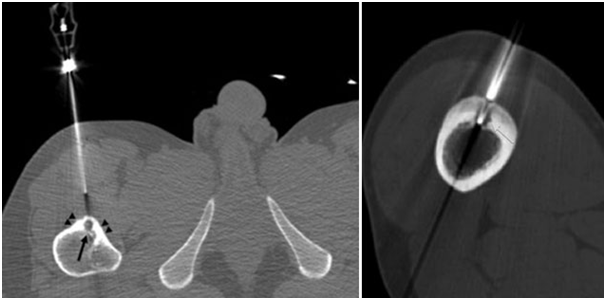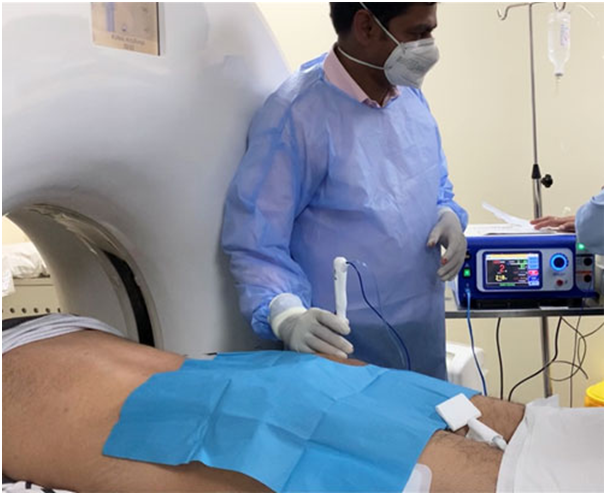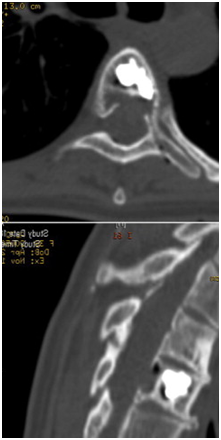| Category | Oncology - Bone Tumor |
Osteoid osteomas, Chondroblastoma, Osteoblastoma, Giant cell Tumor
Palliation of localized, painful osteolytic metastatic and myeloma lesions
Procedure in which the lesion is burnt by producing heat. A special needle is placed within lesion and radiofrequency ablation waves are applied for particular time and temperature. This procedure is done under general anesthesia and CT Scan guidance.


It is treatment of choice for disease. Dramatic relief of pain occurs within 6 hours.
If not fit for anesthesia.
We have very fast and competent working team (Consultant, fellow, clinical assistant, technician and ward assistant) which provide you comfortable atmosphere and ease your nerves. Usual time of stay is around 1-2 Days.
Minor bone fracture (1-2%), Minor pain along needle tract may occur.
You can resume your work after 2-3 days.
Recurrence rate is almost nil.
Cementoplasty can be performed with the ablation especially in cases of metastasis. It is a palliative treatment for bone metastases. It is usually performed to reduce pain where the metastases involve the spine and pelvis. It can also be used to stabilise bones in the event of lytic metastases with a risk of fracture.
The prime indication for cementoplasty in oncology is therefore analgesic treatment of bone metastases in a palliative care patient.
Cementoplasty indeed has a number of advantages – its efficacy, the rapidity of its action, its action of consolidation, the possibility of treating areas already irradiated, – and more and more oncologists are employing percutaneous techniques, and cementoplasty in particular, as a first course of action for managing bone metastases. This enables them firstly to keep radiotherapy in reserve for contraindications to local treatment and secondly to preserve the bone marrow from irradiation; insufficient bone marrow could be a contraindication for performing future chemotherapy.
